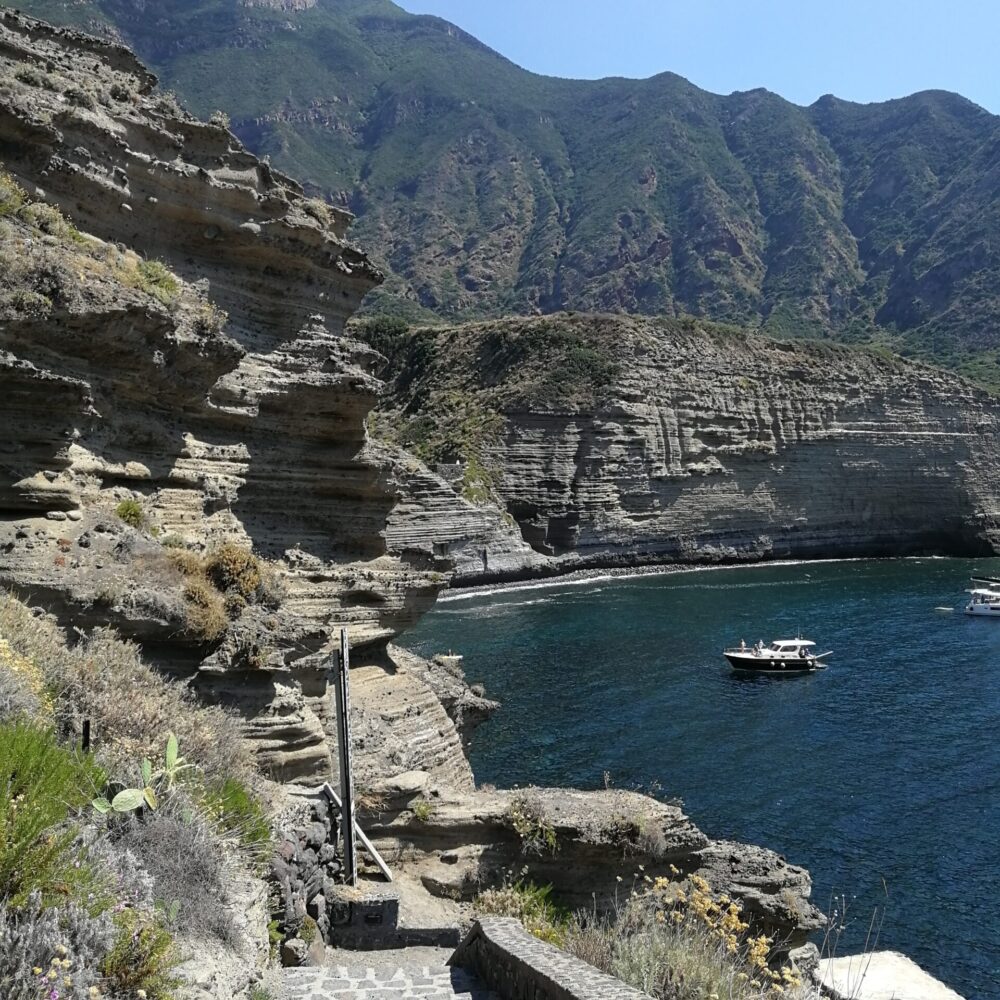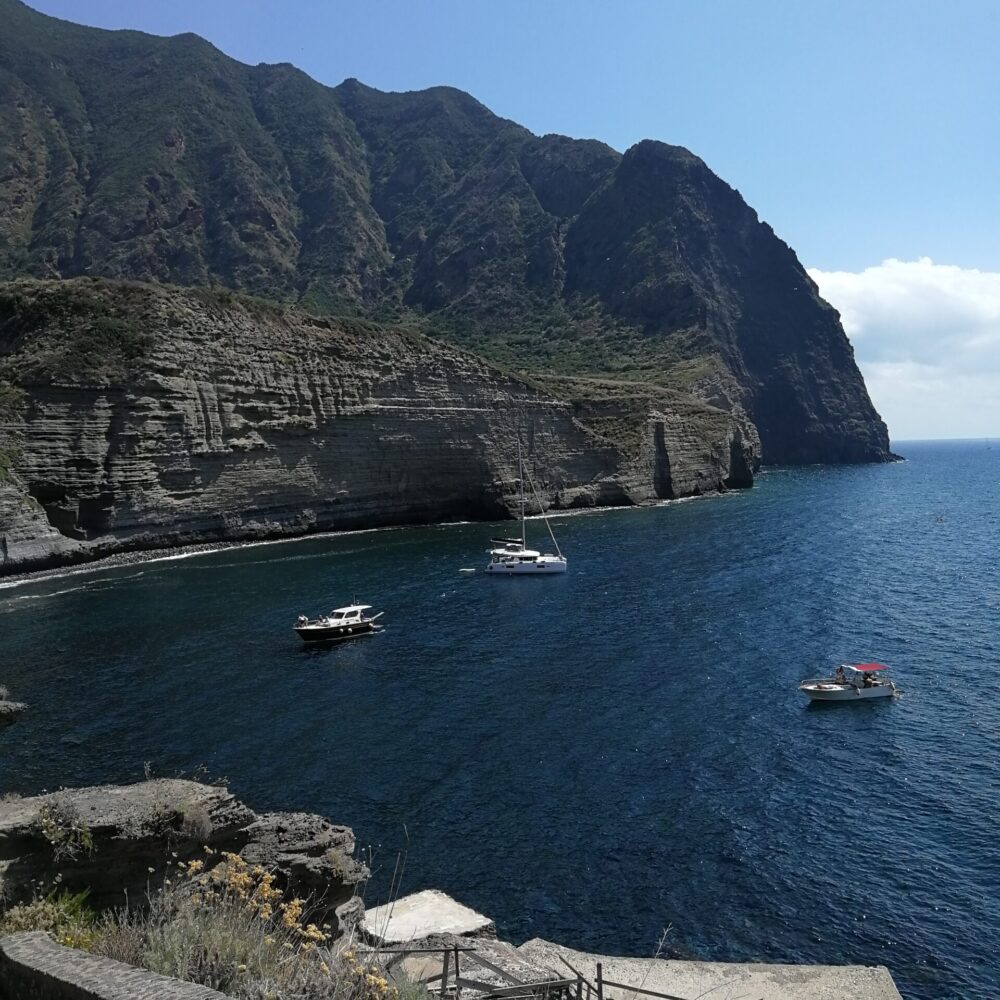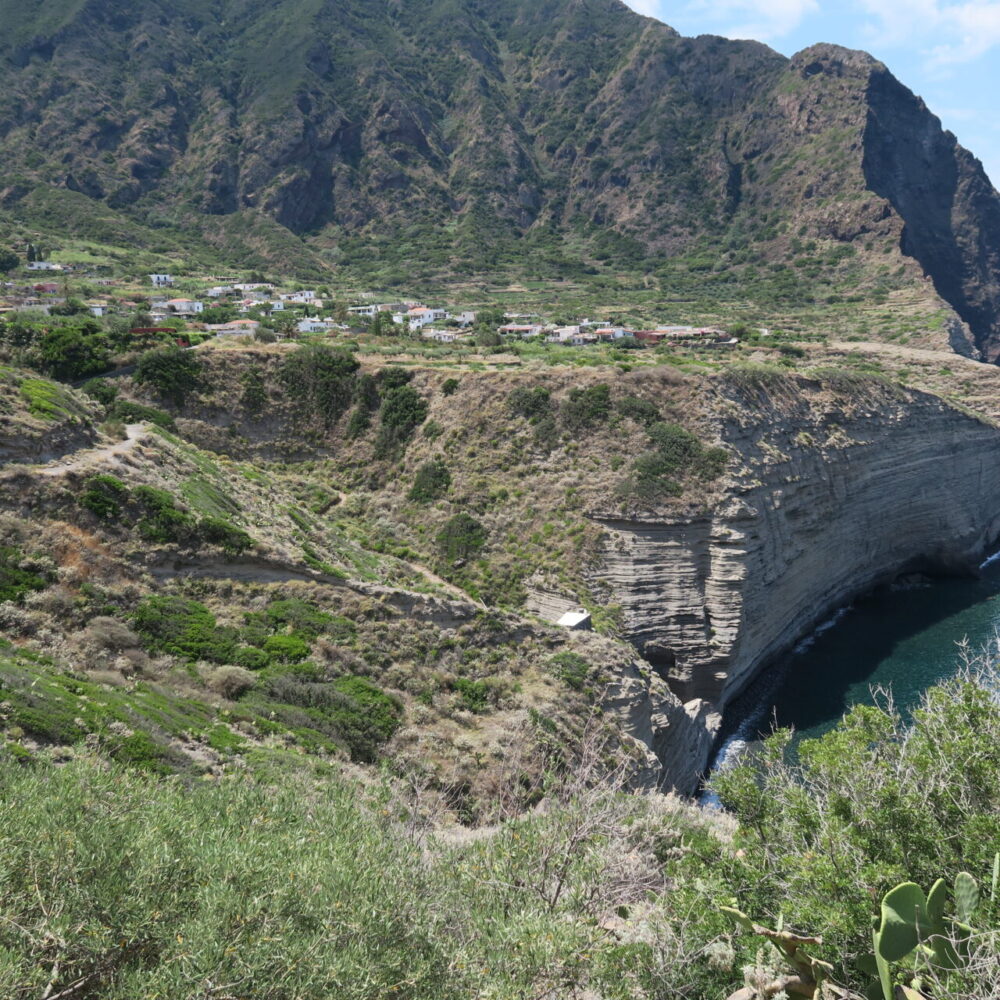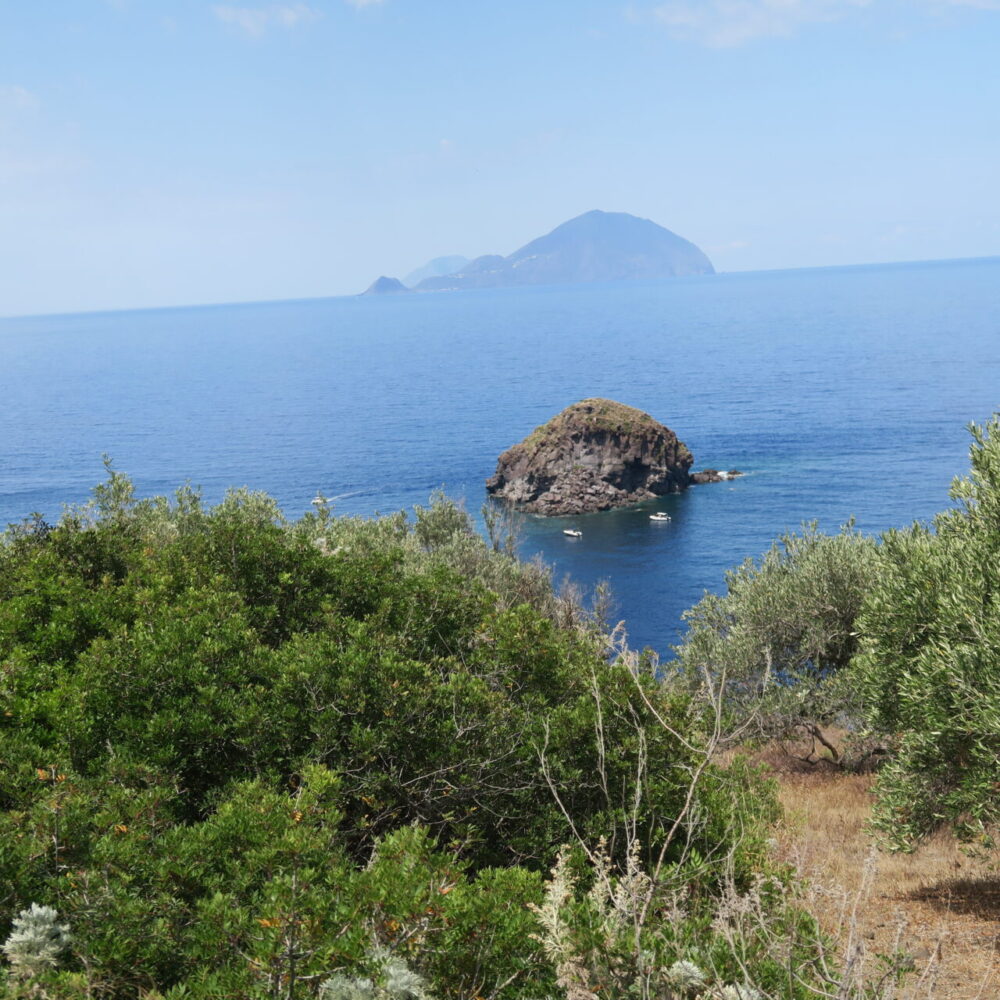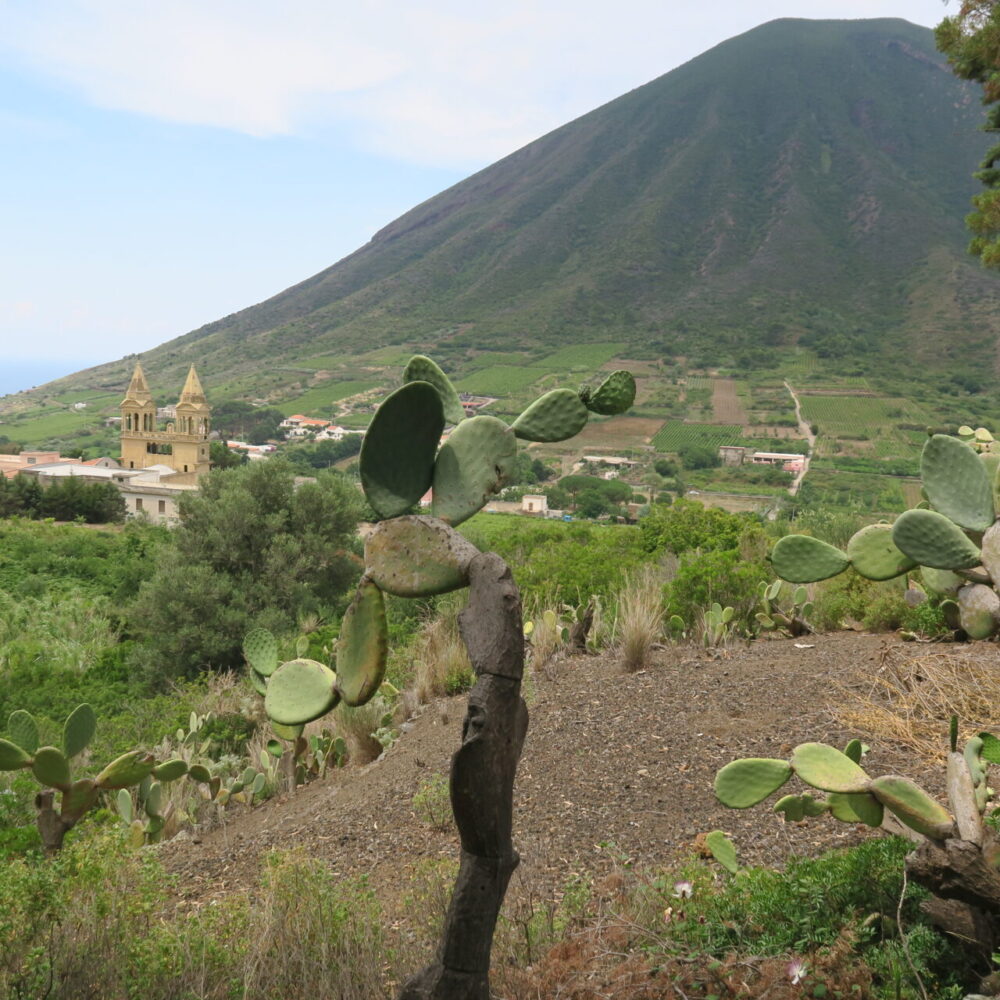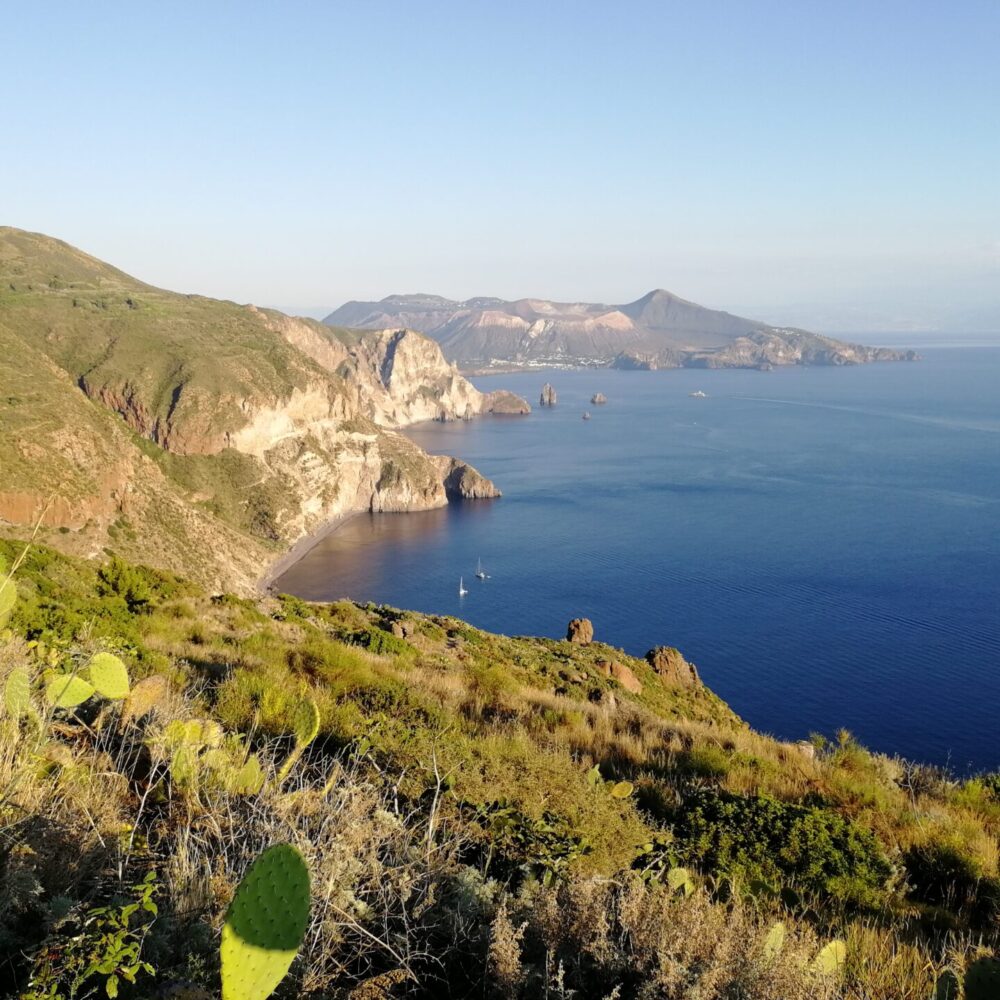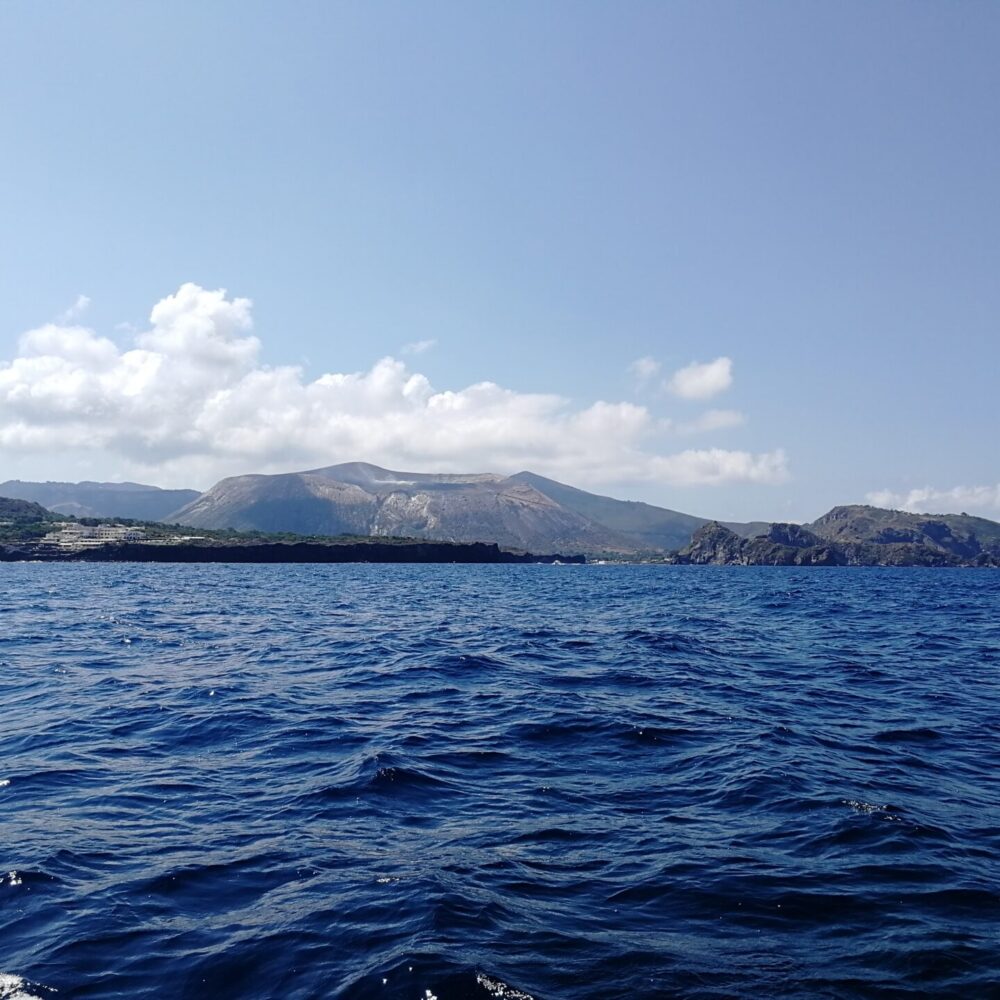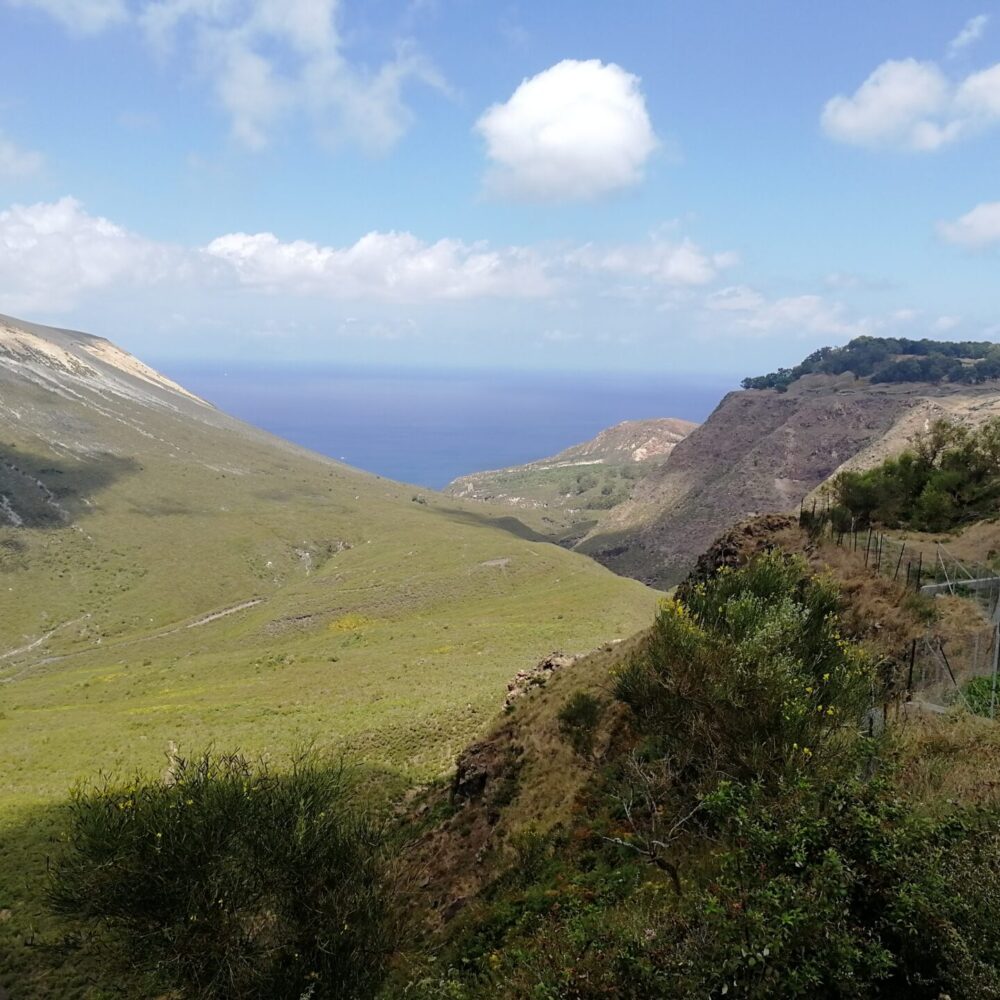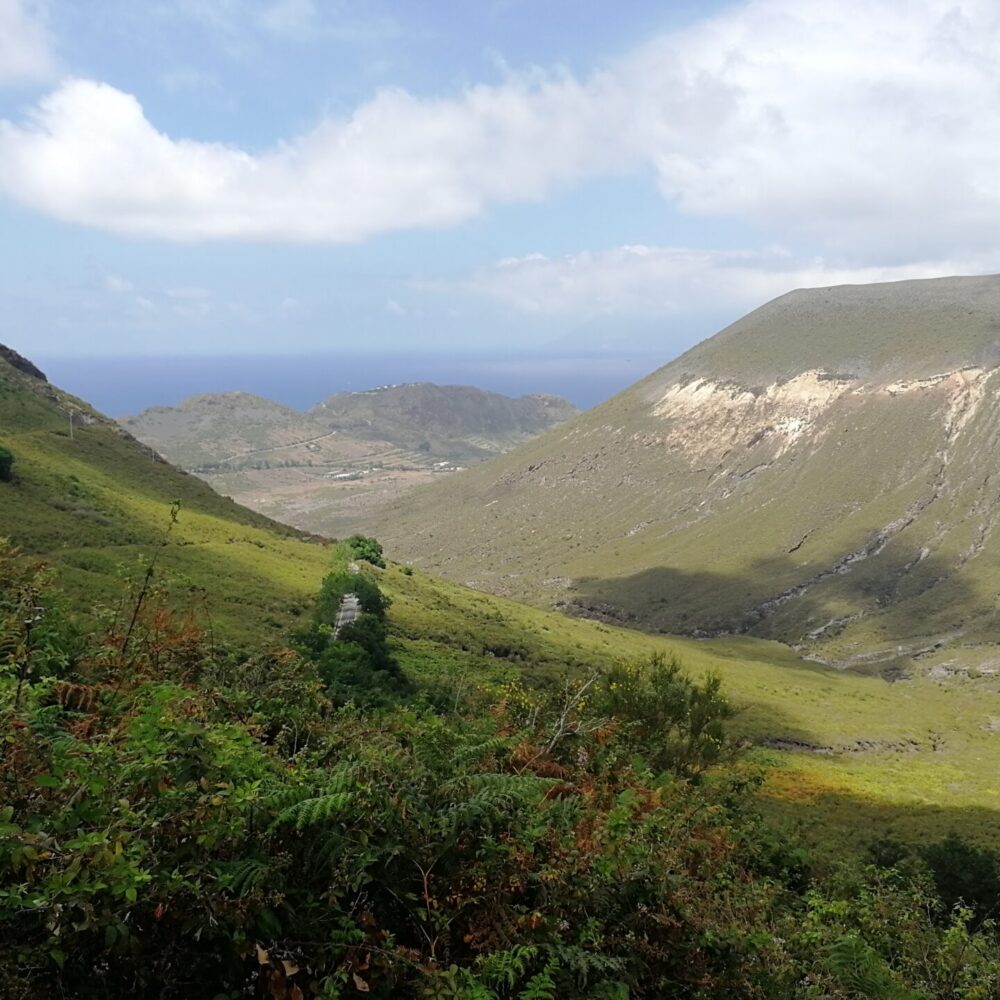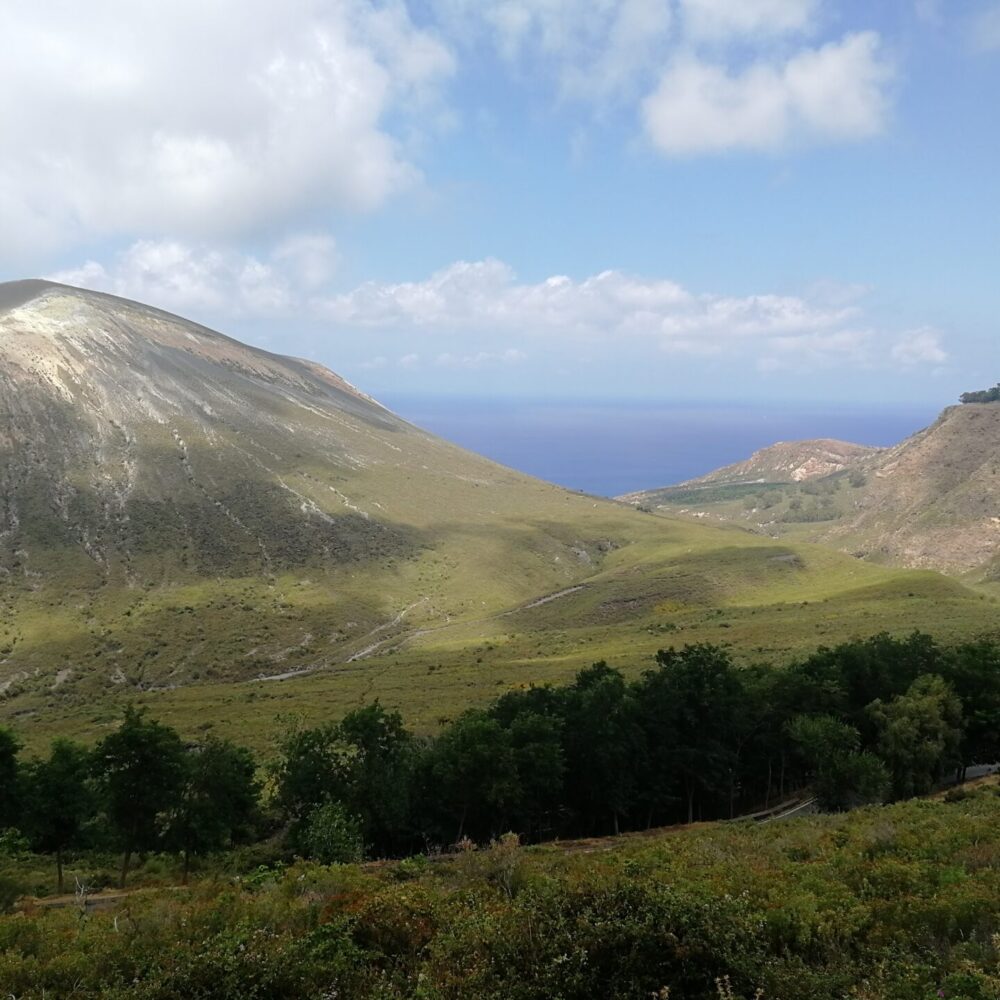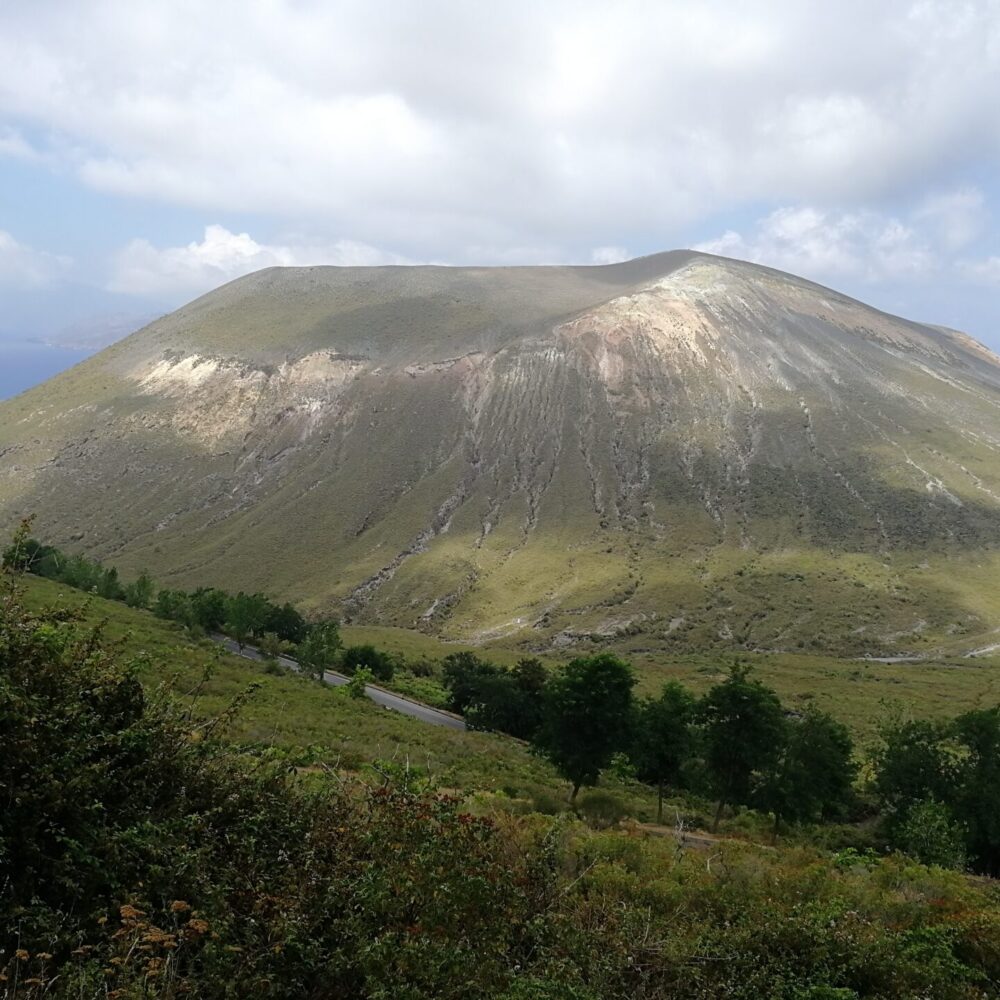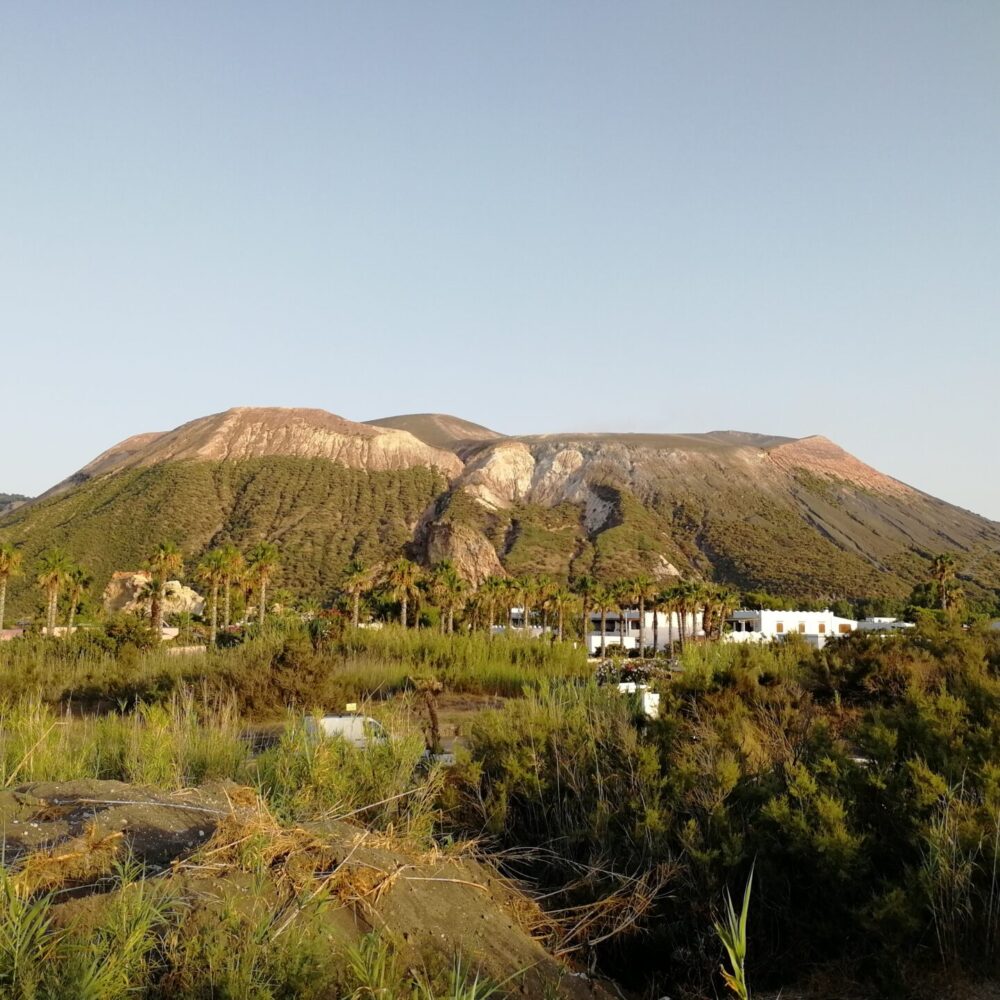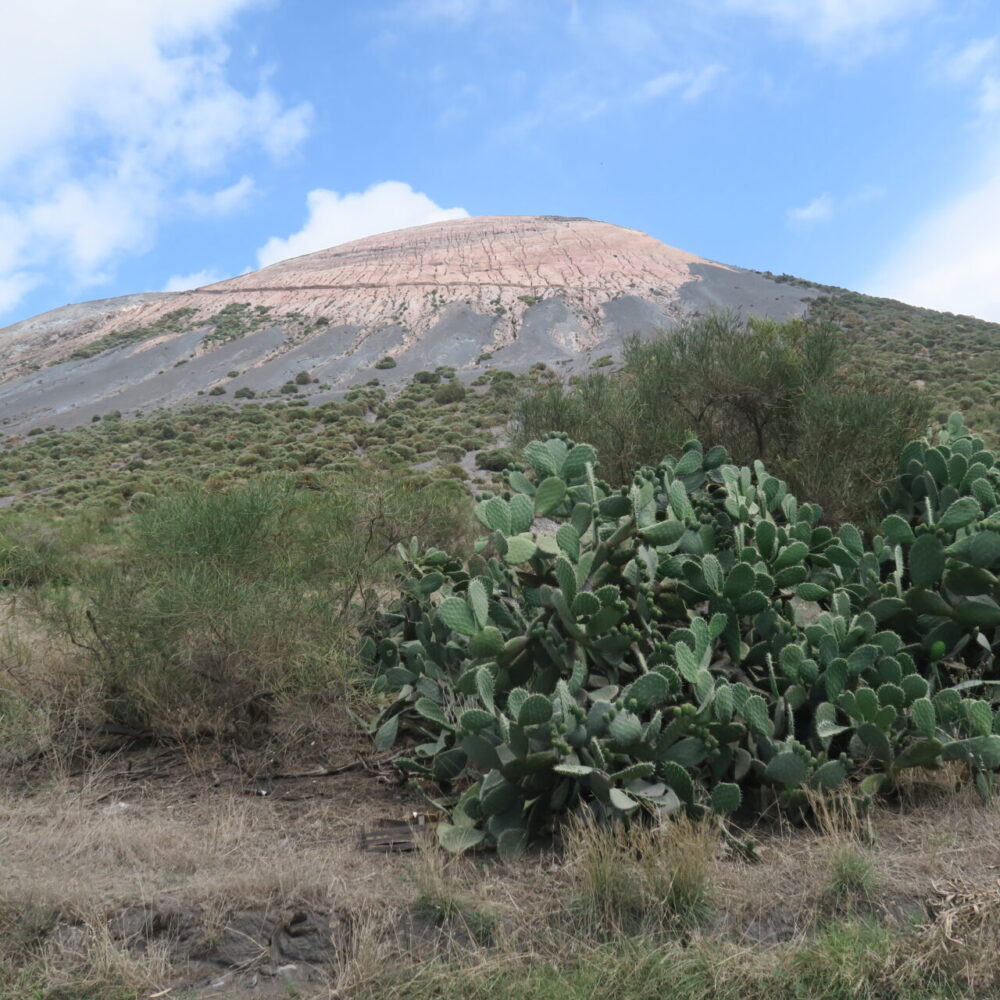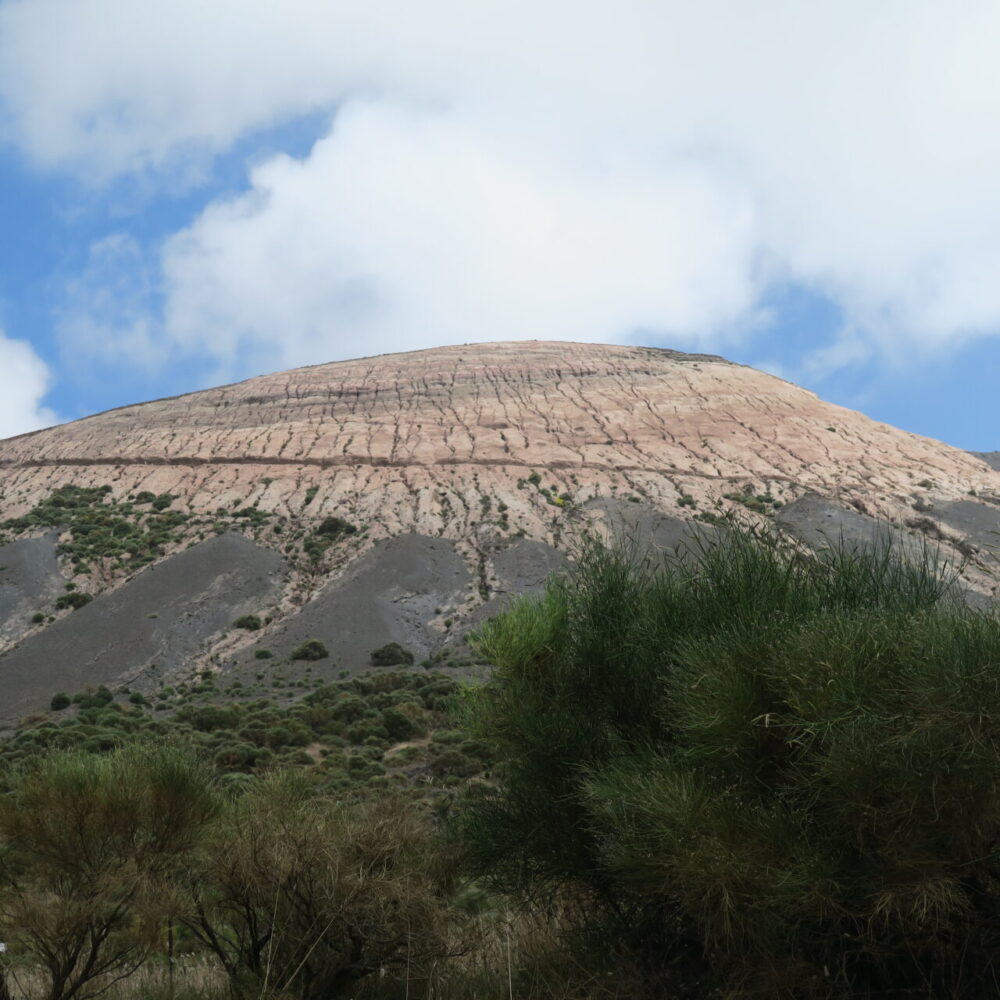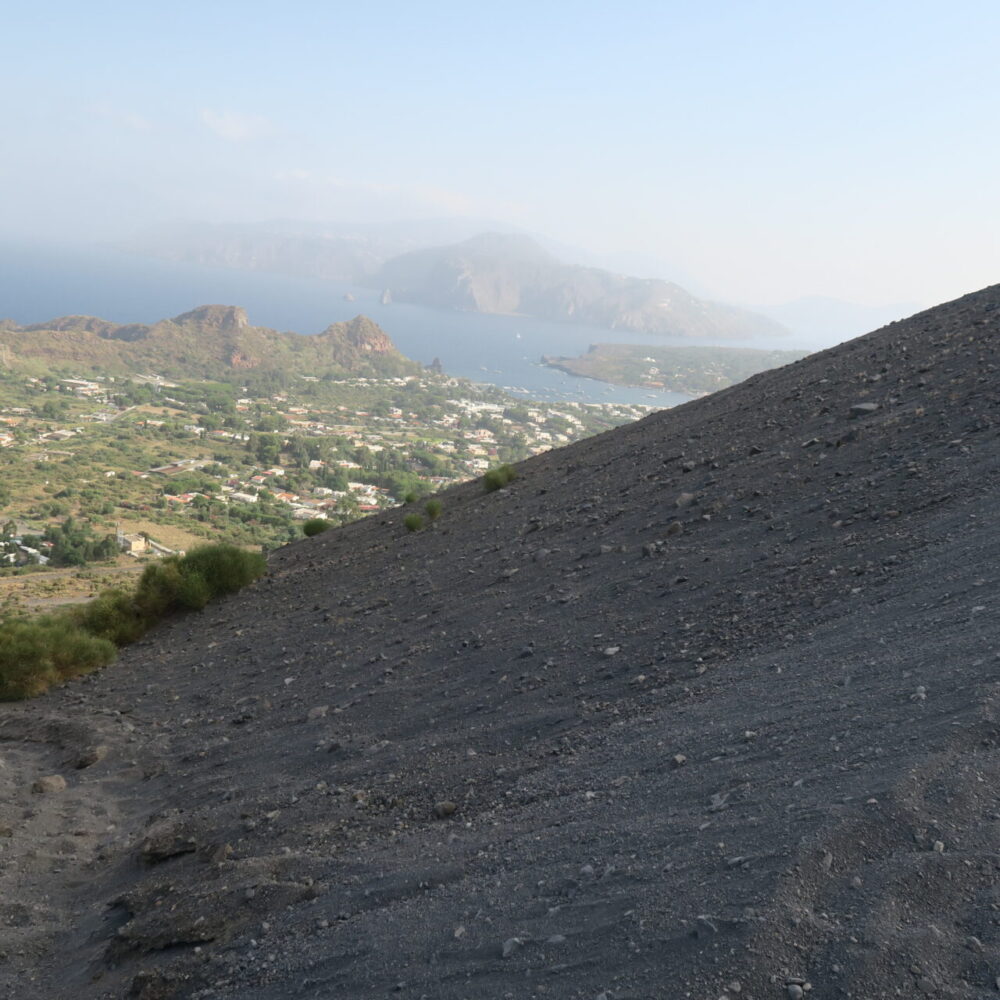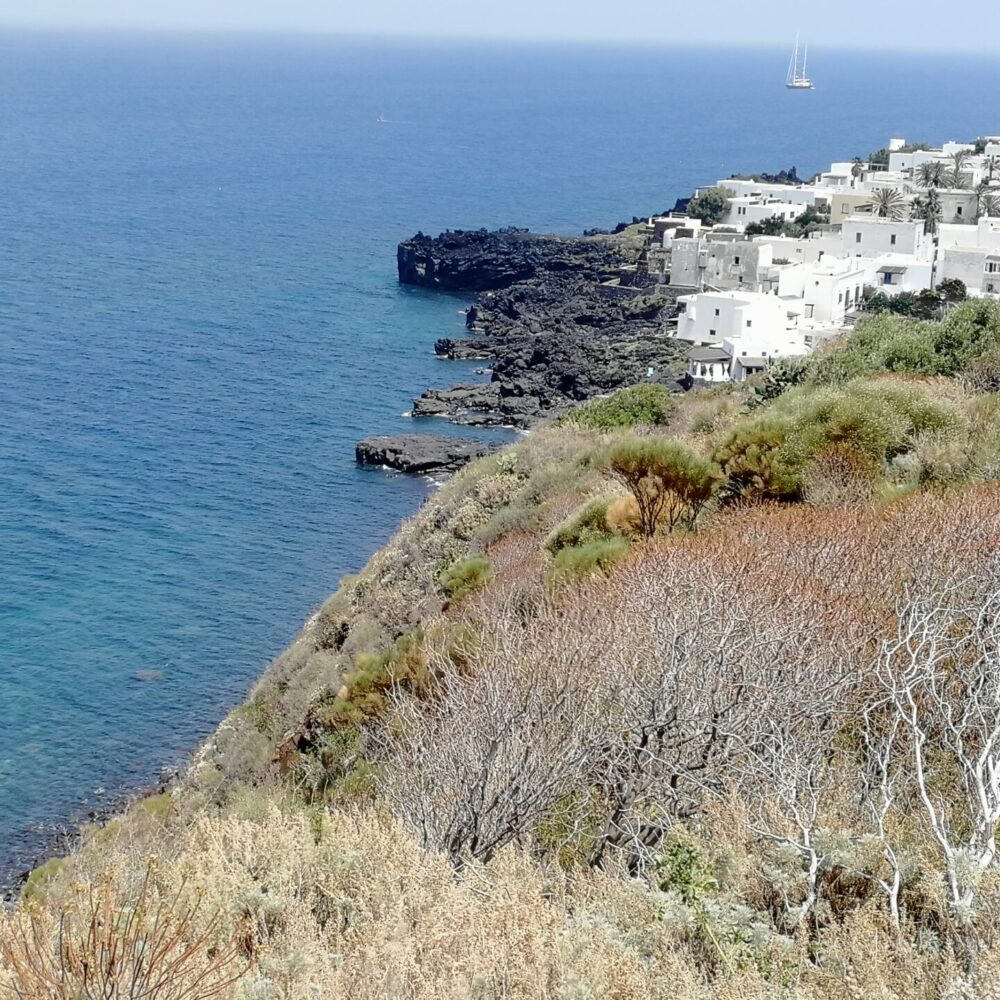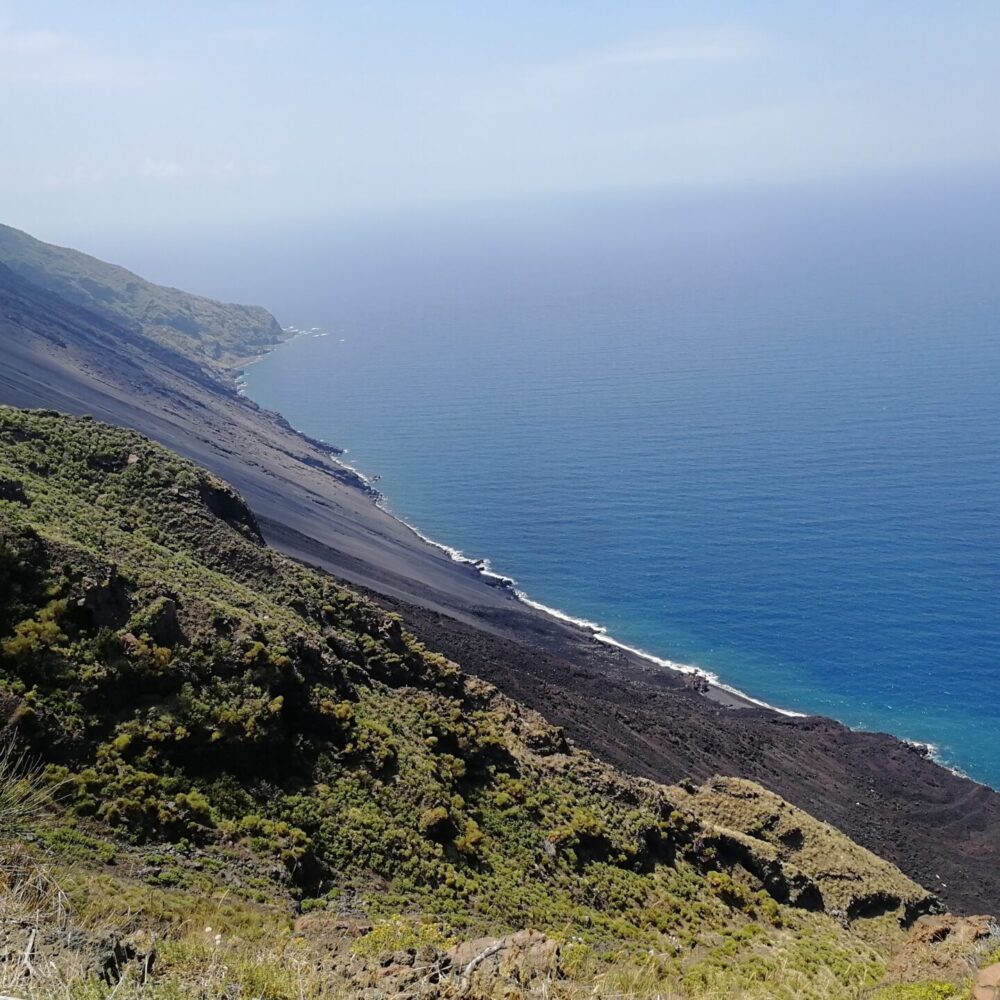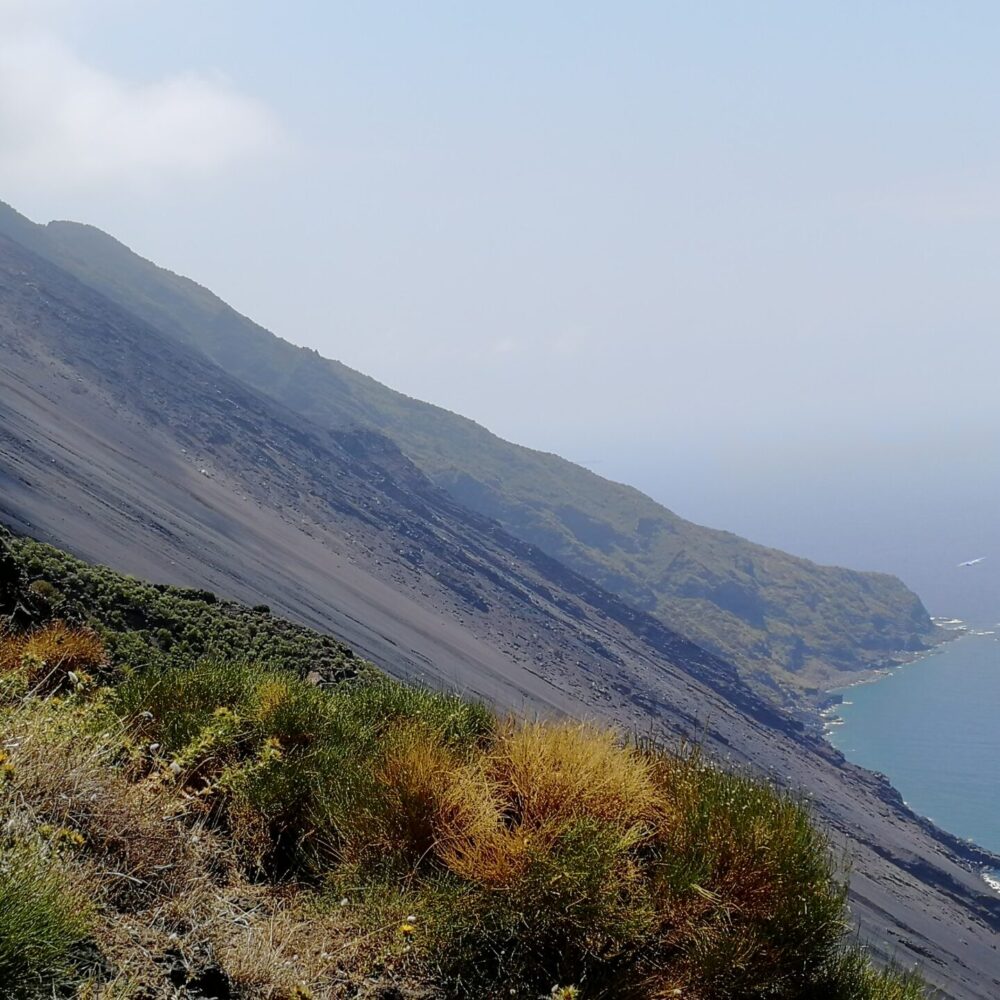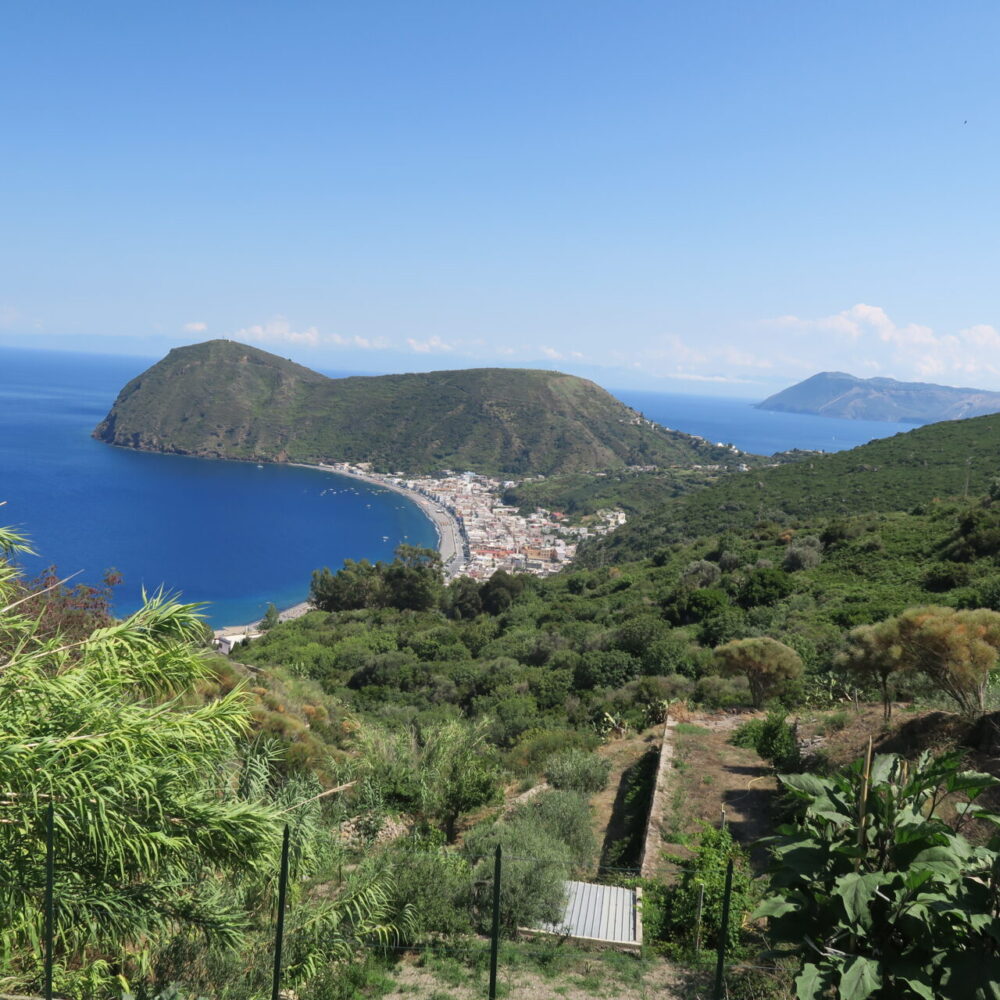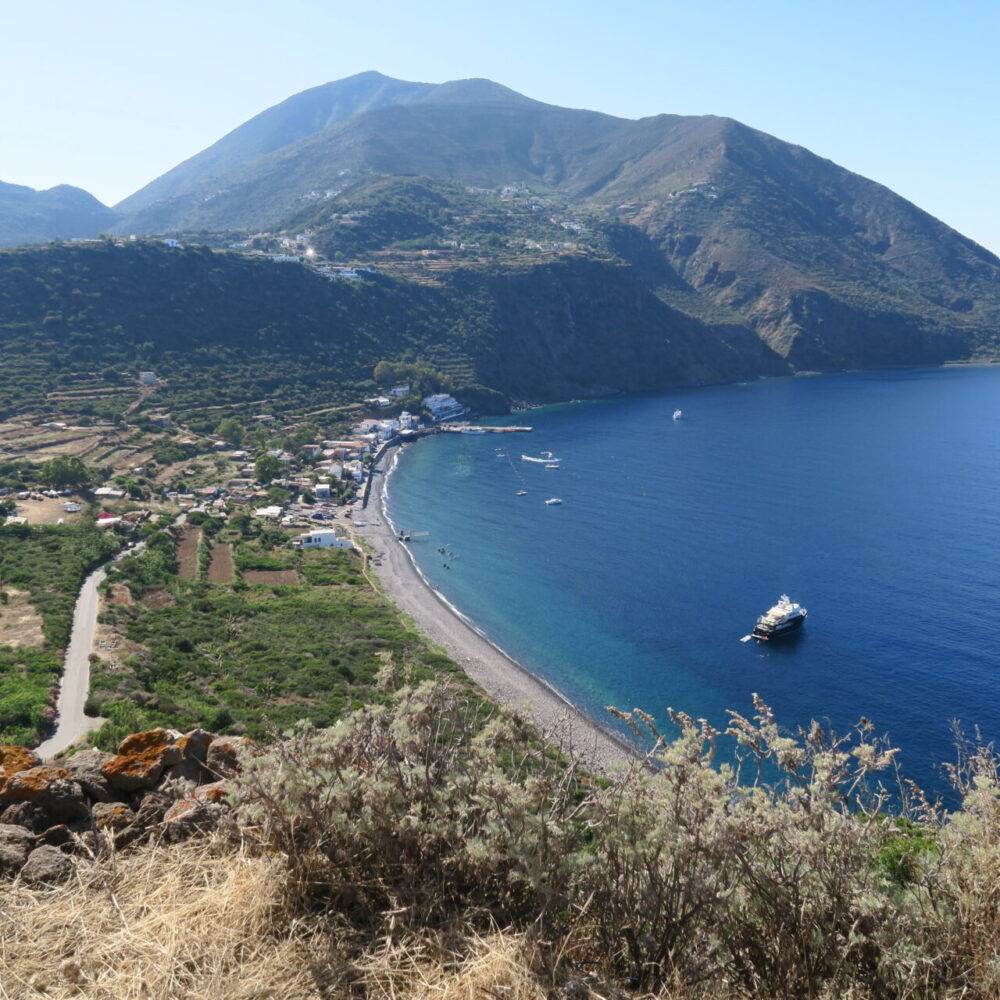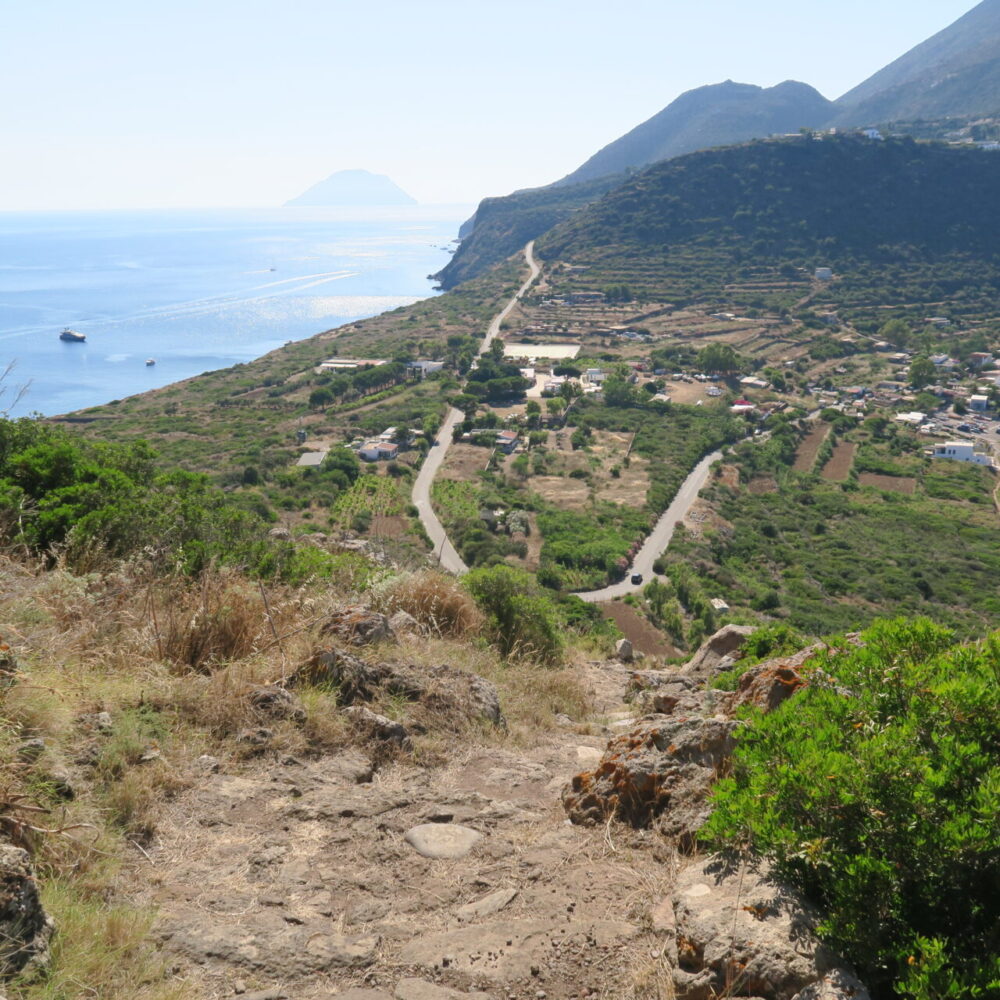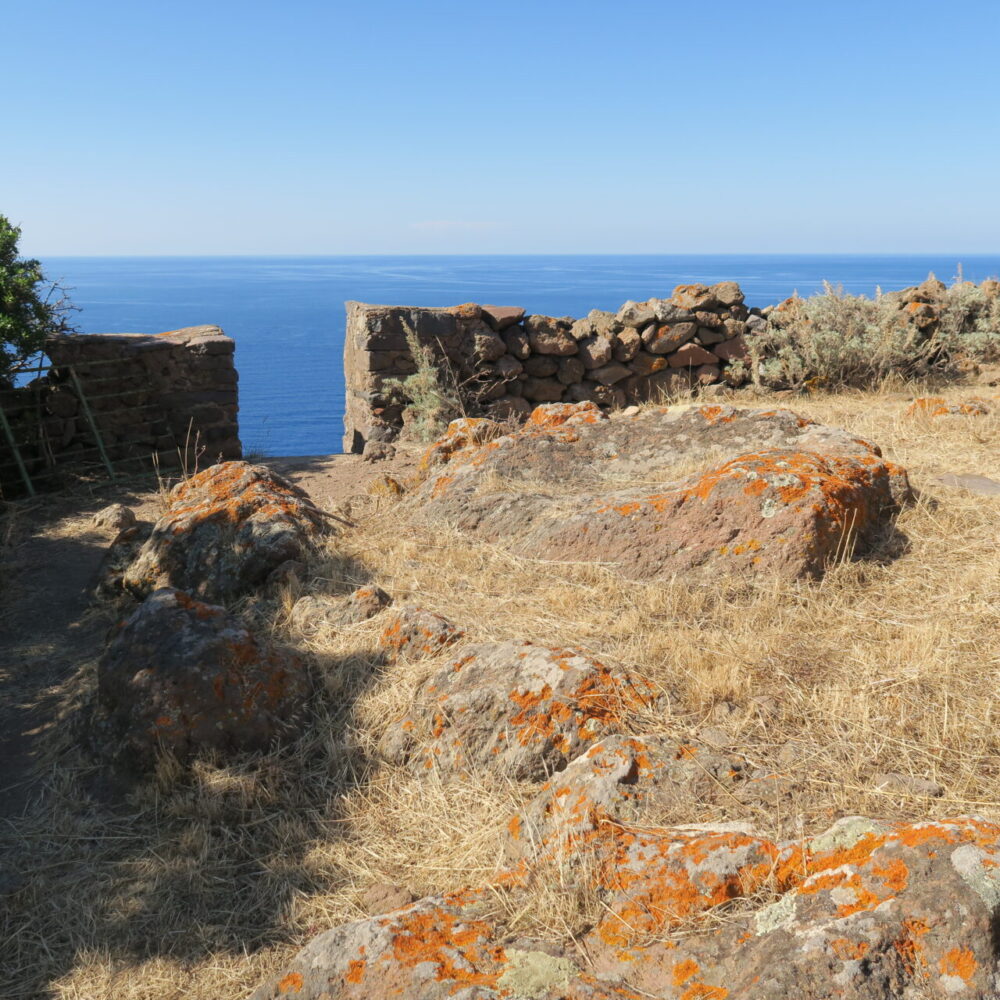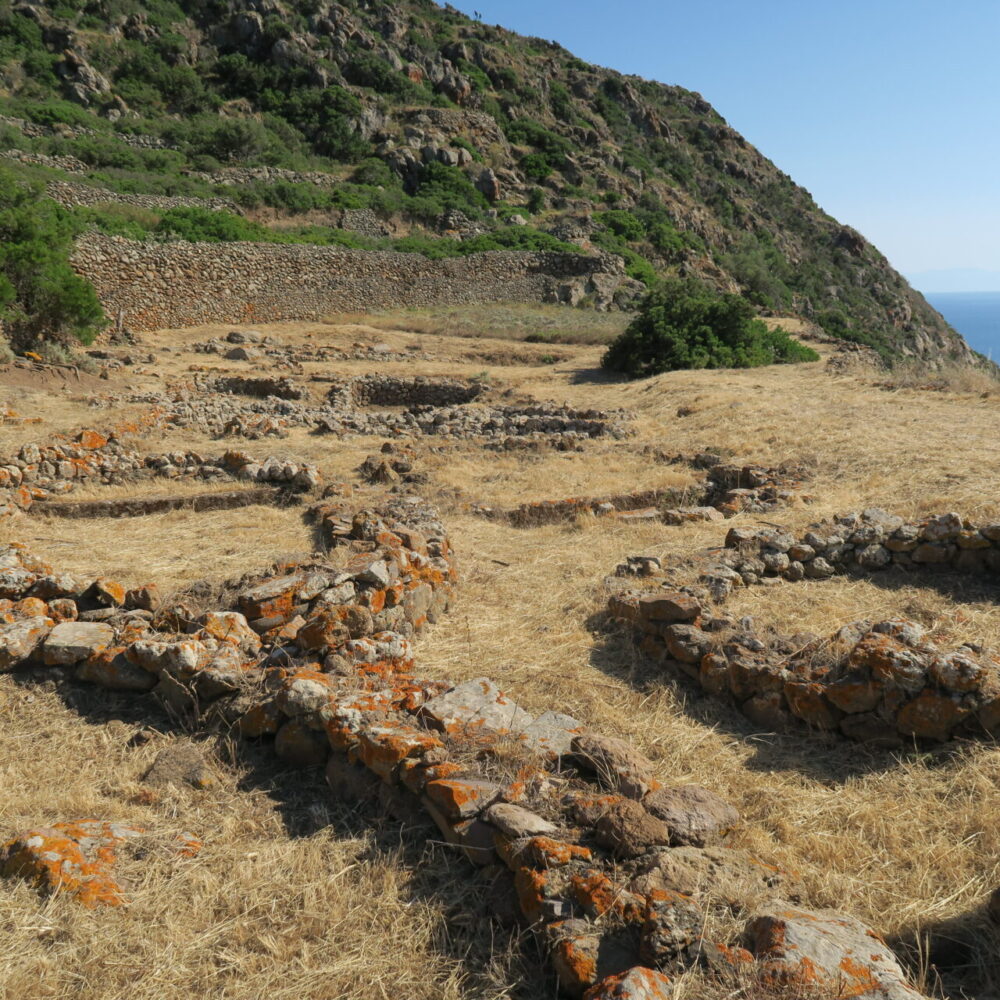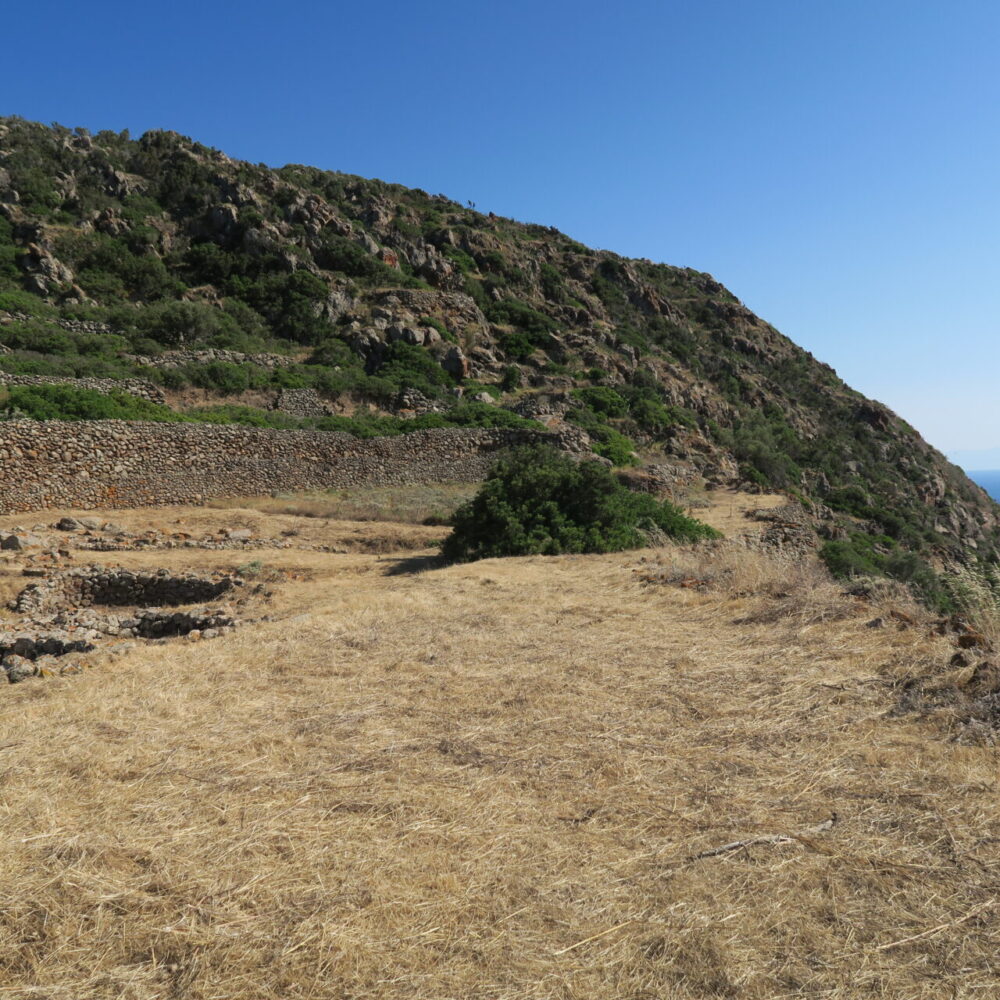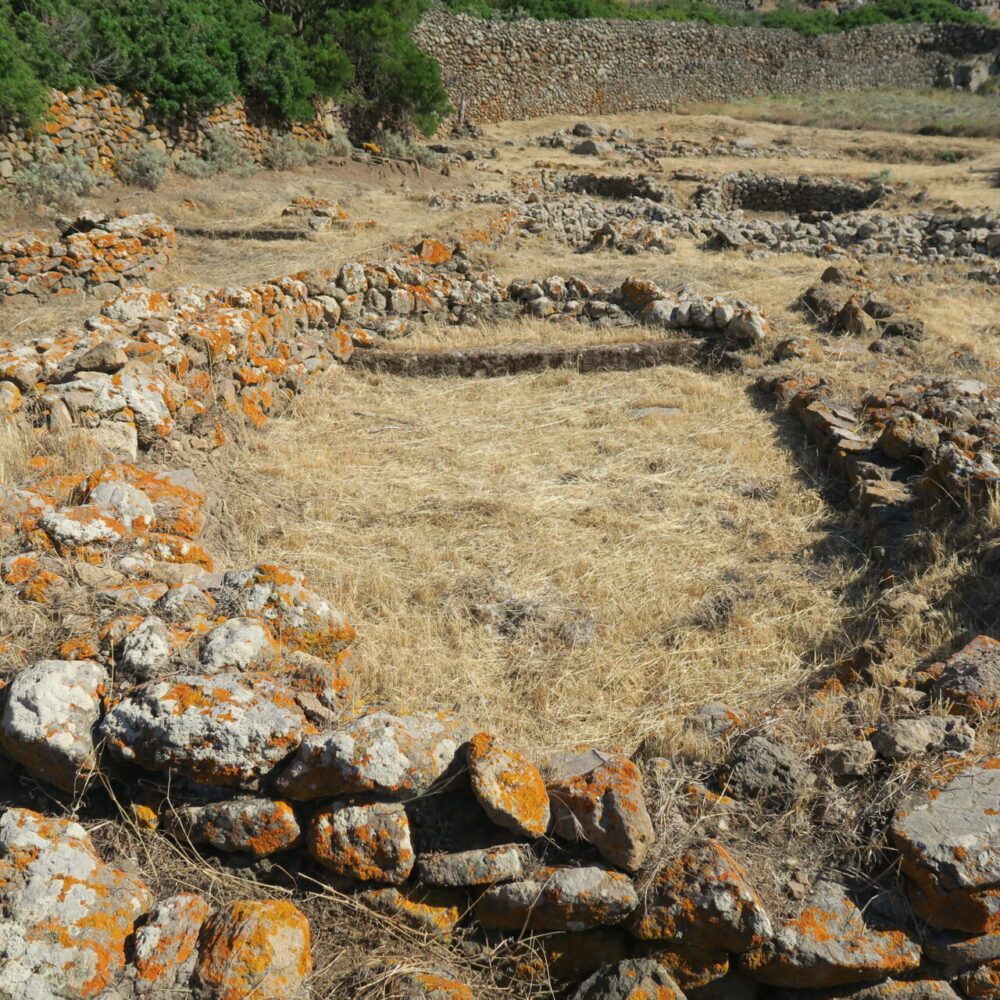The island of Vulcano
Vulcano is an Italian island belonging to the Aeolian archipelago in Sicily. Among the Aeolian islands it is the closest to Sicily, just 12 miles from Capo Milazzo. The other islands are Salina, Lipari, Panarea, Stromboli, Filicudi, Alicudi.
Thucidite, Aristotle and Virgil speak of it.
“A small island lies between Sicania on the one hand / and Lipari on the other / that rises high above the waves and smokes. / It has a cavern underneath, and caves around it, / that of ferocious Cyclops caverns and forges / are, from their smoked and gnawed fires. / The beating of the incudi and of the hammers / that you hear inside, the screeching of the irons, / the quivering and the boiling of its flames / and of its furnaces, of Etna in guise / intonar s hear and yearn is seen. / This is the house where down here rises / Volcano, from which Volcania is called; / and here for arms to manufacture descents / of the great Enea”
(Virgil, Aeneid, book VIII)

The movie on Vulcano
The movie begins with the vision of Vulcano in the background seen from the island of Lipari. Below is the image of the side of the Great Crater on the island of Vulcano and after you see its cone called Cono della Fossa. From its walls the fumes and gases come out. The sulfur vapors condense on the rock formations forming beautiful crystalline deposits of a bright yellow.
With an extension of about 21 square kilometers, it is one of the smallest islands of the Aeolian Islands. Its frequent activity in the classical era inspired the Greeks to suppose that the God of Fire, Hephaestus, worked in his forge within the active cone, now known as the “cone of the Pit”. The island of Vulcano consists of three different volcanic buildings, partially destroyed by calderic collapses. The southern part of the island is made up of the “Primordial volcano”, truncated by the Caldera of the Piano. To the north is the Lentia building, which was largely destroyed by the collapse of the Fossa caldera about 14,000 years ago. This caldera contains the cone of the Fossa, formed in the last 5500 years. The northernmost part of the island is the Vulcanello peninsula, whose formation begins with an underwater eruption in the 2nd century. BC, leading to the birth of an island in the strait between Vulcano and Lipari. The repeated eruptions of this new island make it grow, and in the Middle Ages it joins the island of Vulcano. The last eruption of Vulcanello dates back to the 16th century. In recent centuries, however, the activity has concentrated on the crater of the Fossa.
The island with craters and calderas
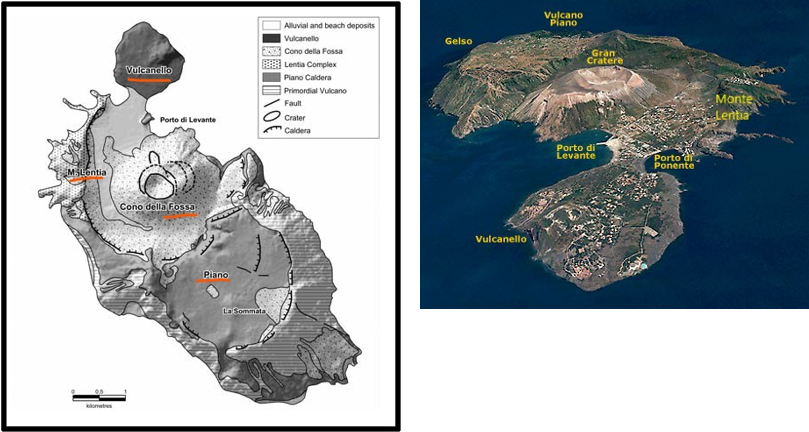
An important eruptive cycle began in 1727, and in 1739 the rhyolithic flow of “Pietre Cotte” was released, the most recent effusive activity of Vulcano. During the 150 consecutive years, sporadic explosive activity is recorded, culminating in the last eruption of Vulcan, which takes place between 2 August 1888 and 22 March 1890. This eruption is the typical event that led to the introduction of the term “Vulcan” activity, characterized by distinct very strong explosions, which emit fragments of lava in an almost solid state. The numerous large “bread crust” bombs that were launched up to the area now occupied by the town of Vulcano Porto are famous. Since the area was then uninhabited, there were no human victims or material damage of great proportions, even if the fallout of pyroclastic material and the shock waves caused by the strongest explosions caused damage to buildings on the neighboring island of Lipari. Since the end of the last eruption, Vulcano has been in a state of eruptive stillness, but this “sleep” is sometimes disturbed by seismic activity crises and increases in fumarolic emissions and temperatures, the most recent which began in 1985. This underlines the great risk that the village of Vulcano Porto, located immediately at the base of the Fossa cone, would run in the event of a resumption of the eruptive activity.
Vulcano has started roaring again
November 28, 2021
Earthquake off the Aeolian Islands, eruption in Stromboli and red zone in Vulcano:
In the heart of the Aeolian archipelago the volcanic systems are in continuous evolution: in this scenario, in addition to the new spectacular eruption of Stromboli, there is also, at the center of attention, the situation of Vulcano which after the last eruption of 131 years is out of half-sleep. The fumes that come out of the central crater and the continuous gas exhalations in different places on Vulcano create a lot of concern. The alert level is now high, as evidenced by the extension of the “red zone” to an area of about 6 kilometers.
Image of the Volcano’s recent activity




